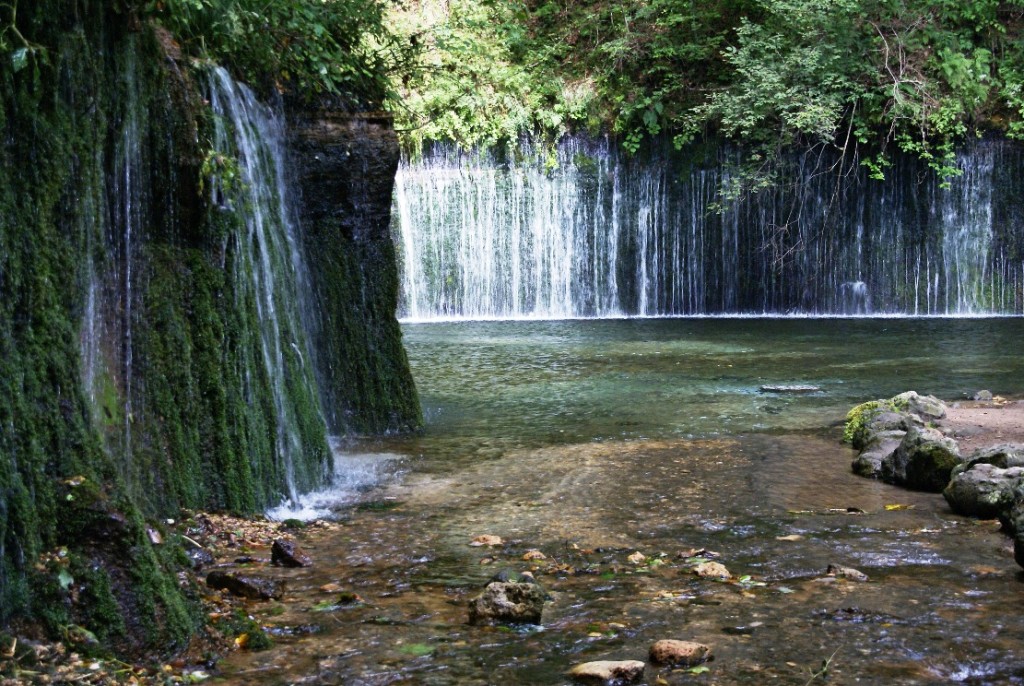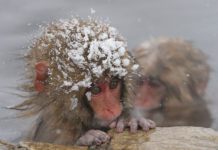There are several scenic places created by the eruptions near Mt. Fuji. Shiraito Falls is one of them, and a waterfall where spring water of Mt. Fuji flows down in hundreds of threads on the surface of a 20 meters high and 200 meters wide rock wall. The majestic natural Shiraito Falls is a waterfall in Fujinomiya, Shizuoka Prefecture, near Mount Fuji, Japan.
Shiraito Falls is part of the Fuji-Hakone-Izu National Park and has been protected since 1936 as a Japanese Natural Monument. The waterfalls were considered sacred under the Fuji cult. The Shiraito Waterfall particularly is distinct due to its wide percolating series of weeping walls through moss and other foliage that stretched for such a wide width that almost no way any photograph could do it justice.
The Shiraito Falls is listed as one of “Japan’s Top 100 Waterfalls”, in a listing published by the Japanese Ministry of the Environment in 1990. It was also selected by the Tokyo Nichi Shimbun and Osaka Mainichi Shimbun. The waterfall is one of the 100 Landscapes of Japan in 1927. Therefore, in 2013 the waterfall was listed on the World Heritage List as part of the Fujisan Cultural Site.
Another waterfall, the Otodome Falls is about a 5-minute walk away. The waterfall is completely picturesque and peaceful, and it is one of the favorite waterfalls in the country. The Shiraito-no-taki is a scenic allure to visitors, and its pool at its base exhibited deep blue colors of water. The waterfall is the perfect picnic place for both families and groups.
The scenery of water rushing down from a fault slip of lava created by eruptions is a magnificent view that cannot be seen elsewhere. Shiraito Falls is a graceful expanse of waterfalls that are formed by the Fuji River water, snow water, and spring water around Mount Fuji, merging together as a single flow and falling off.
Shiraito falls literally meaning “white thread falls”. The area is also well-vegetated in spring, and the crimson colors of the maple trees in fall complement the attractiveness of the waterfall.
Also, Read! Castle of Mada’in Saleh


















